Services
Metal Roofing
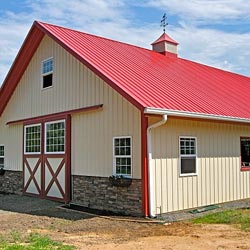
Pole Barn Roofing
Pole barn roofing, also known as agricultural roofing, is a great option that is virtually maintenance-free for its lifetime. Metal materials work great for pole barns as they don’t require painting or preserving. They’re lighter than shingles yet still very durable. They can also offer a 20% reduction in energy cost because of their ability to release absorbed heat.
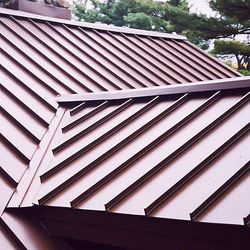
Standing Seam Roofing
Standing seam roofing comes in raised interlocking panels that run vertically up the roof. They’re great because they’re maintenance free; won’t rot, rust or crack; resist staining and streaking; and never need to be cleaned.
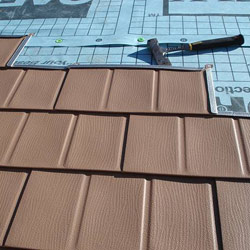
Metal Shingles
Metal shingles are lightweight and offer great longevity. Warranties can last up to 50 years. Metal is great at preventing leaks, is wind resistant and fireproof. Metal shingles also reflect heat and keep homes cooler in the summer. Cost can be a drawback,but the investment may be worth it.
Flat Roofing
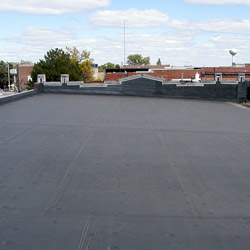
Rubber Roofing (EPDM)
Rubber roofing aka EPDM (short for ethylene propylene diene monomer) is durable and cheap. While being relatively light, it’s also very resistant to tearing and scuffs, plus leaks are pretty easy to patch. On the downside, the standard black absorbs heat and light colored coatings can cost 30% more. We use GenFlex as the main manufacturer for EPDM (an excellent, top-notch brand).
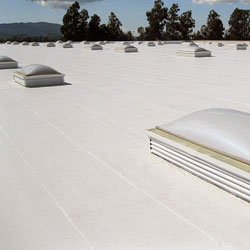
TPO Roofing
TPO (or thermoplastic olefin) is a newer type of roofing material with a single ply roofing membrane. TPO is energy efficient, UV-resistant, heat-resistant and at a reasonable cost. Available in white, light grey and black reflective color options. Can handle expansion and contraction very effectively. Mule-Hide is the manufacturer that we primarily use; their TPO is hands down the best in the industry.
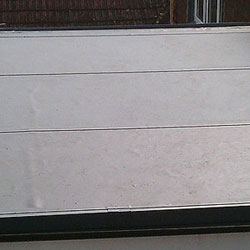
Modified Bitumen
This is a single-ply rolled roofing system that offers safe and easier than normal installation. It’s light colored surface can reflect heat and help to reduce energy bills. Price is middle-of-the-road. Not quite as scuff or tear resistant as rubber-membrane roofing. We use the excellent CertainTeed as the provider for our modified bitumen roofing products.
Shingles
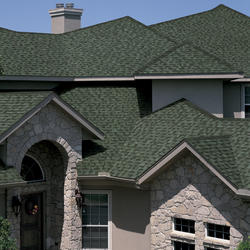
Architectural Shingles
Architectural shingles are an enhanced, next-generation of dimensional shingles with dramatic and exciting looks. (Sometimes these are referred to as laminated shingles.)

Vinyl Siding
Vinyl siding is a plastic exterior siding for houses, engineered from PVC. Vinyl siding is a fantastic option and the #1 exterior siding option sold in the U.S. It’s durable, reliable and has fantastic warranties. (Most manufacturers offer a lifetime warranty for the original owner!) Vinyl siding is resistant to color fade, protects against rot and decay, and will withstand winds of 100mph. Vinyl siding is also very energy efficient, blanketing your home with continuous insulation year-round.
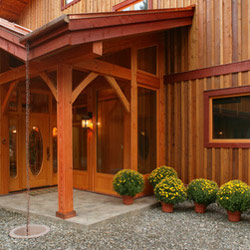
Wood Siding
Wood siding looks absolutely beautiful and can last a century or more, given proper care. However it does need stained or painted every few years. Newer engineered wood siding is a bit cheaper and doesn’t need repainted as often – but might not have quite the lifetime of normal wood siding. Wood siding is gorgeous, but if not maintained properly the wood can be susceptible to rot and decay caused by moisture. However, damaged sections of wood siding are easy to replace.
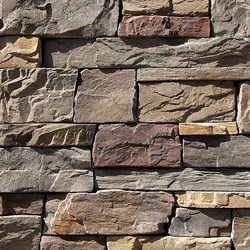
Stone Veneer Siding
Stone veneer siding looks like real rocks but offer some even better advantages. This type of siding looks authentic because it’s molded from real rock. The color, pattern and texture all mimic real stone and it’s hard for most people to tell the difference if properly installed. Even better, stone veneer is much more lightweight than real stone. It installs fairly easily compared to the real stuff too. For a natural, stone look stone veneer can’t be beat.
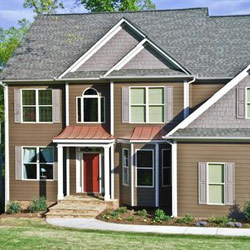
Metal Siding
Wood siding looks absolutely beautiful and can last a century or more, given proper care. However it does need stained or painted every few years. Newer engineered wood siding is a bit cheaper and doesn’t need repainted as often – but might not have quite the lifetime of normal wood siding. Wood siding is gorgeous, but if not maintained properly the wood can be susceptible to rot and decay caused by moisture. However, damaged sections of wood siding are easy to replace.
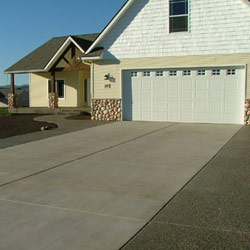
Concrete Flat Work
Flatwork is any concrete work done on a horizontal surface, like floors, ceiling, outdoor patios, driveway, sidewalks, etc. Generally, any sort of concrete slab is considered flat work. Rebar (or metal reinforced bars) may be added into the concrete for extra support. The rebar is shaped together in a grid-like pattern with concrete poured over the top. This greatly increases the durability and strength of the concrete.
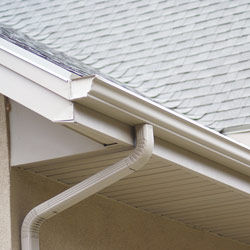
5 Inch K Style Gutter
K-Style gutters are the most popular style of gutter. The unique “K” shape makes them stronger, plus they’re able to hold more water than rounded gutters of similar diameter. (They’re called “K Style” because if you look at them from the side they sort of look like the top part of the letter K.) 5 inch width gutters should be more than enough for most residential applications. K-style gutters also sort of resemble the crown molding seen on interior ceilings. They blend in with modern architectural trends, which is part of the reason for their popularity. K-style gutters are the default choice for many home manufacturers and contractors.
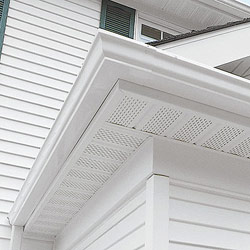
Vinyl Soffit
Soffit is your roof overhang – in french literally meaning “something fixed underneath”. Vented soffit lets your attic circulate air to cycle heat and moisture from your house. Vinyl soffit had many advantages, namely that it’s usually the cheapest option, is the best for insulation, it won’t rot, is chip, crack and water resistant, is easy to clean and is available in many different styles. There are a few disadvantages of vinyl soffit as well. First, if it’s exposed to lots of sunlight it can become brittle. It can develop mold if damper climates. It can also discolor over time because it’s more easily affected by heat.
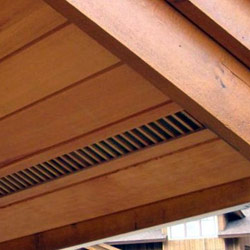
Wood Soffit
Wood soffit slightly more expensive than vinyl. It also needs a bit more maintenance to keep moisture from getting into your home. Wood soffit is used when you want to match the pattern of your fascia board. Wood soffit can be stained to match just about any look. Many different types of wood options are available such as redwood and cedar, which are both very resistant to both insects and rot. Wood is the choice for strength in terms of withstanding forces such as hurricane-force winds.
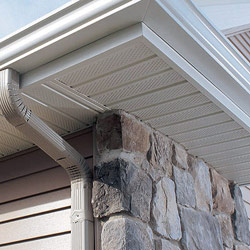
Metal Soffit
Metal soffit (aka aluminum soffit) is very durable and won’t crack, chip or rot. It’s easier to work with than vinyl as you can fit it into different, non-standard spaces. Metal soffit can also act as a fire retardant along your roof. It’s water resistant and easy to clean. Metal will also conceal any imperfections in the trim. However, metal soffit is a bit more expensive than either vinyl or wood. It can also dent if hit with enough force. It doesn’t insulate your home as well as vinyl. Also keep in mind that insurance costs increase with aluminum.
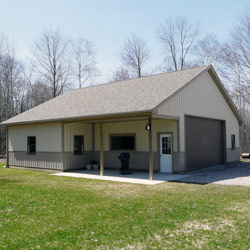
Pole Barns
Pole barns are also called post frame buildings because they use large posts to support its columns. Pole barns are a very cost effective and versatile option, great for agricultural, residential, commercial or even equine use. They’re great for use as a shed, garage, workshop, or simply extra outdoor storage. Pole barn buildings are energy efficient as well and easy to insulate.
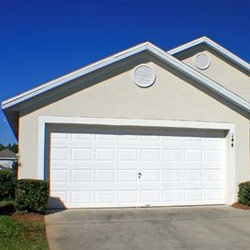
Garages
If you’re looking for extra space, a detached or attached garage might be just the ticket. Garages are a bit more expensive than pole barns but offer a lot more. Whether it’s for parking your cars, storage, a workshop or a man cave, building a garage is a great option. Garages can also add lots of value to the worth of your home.
